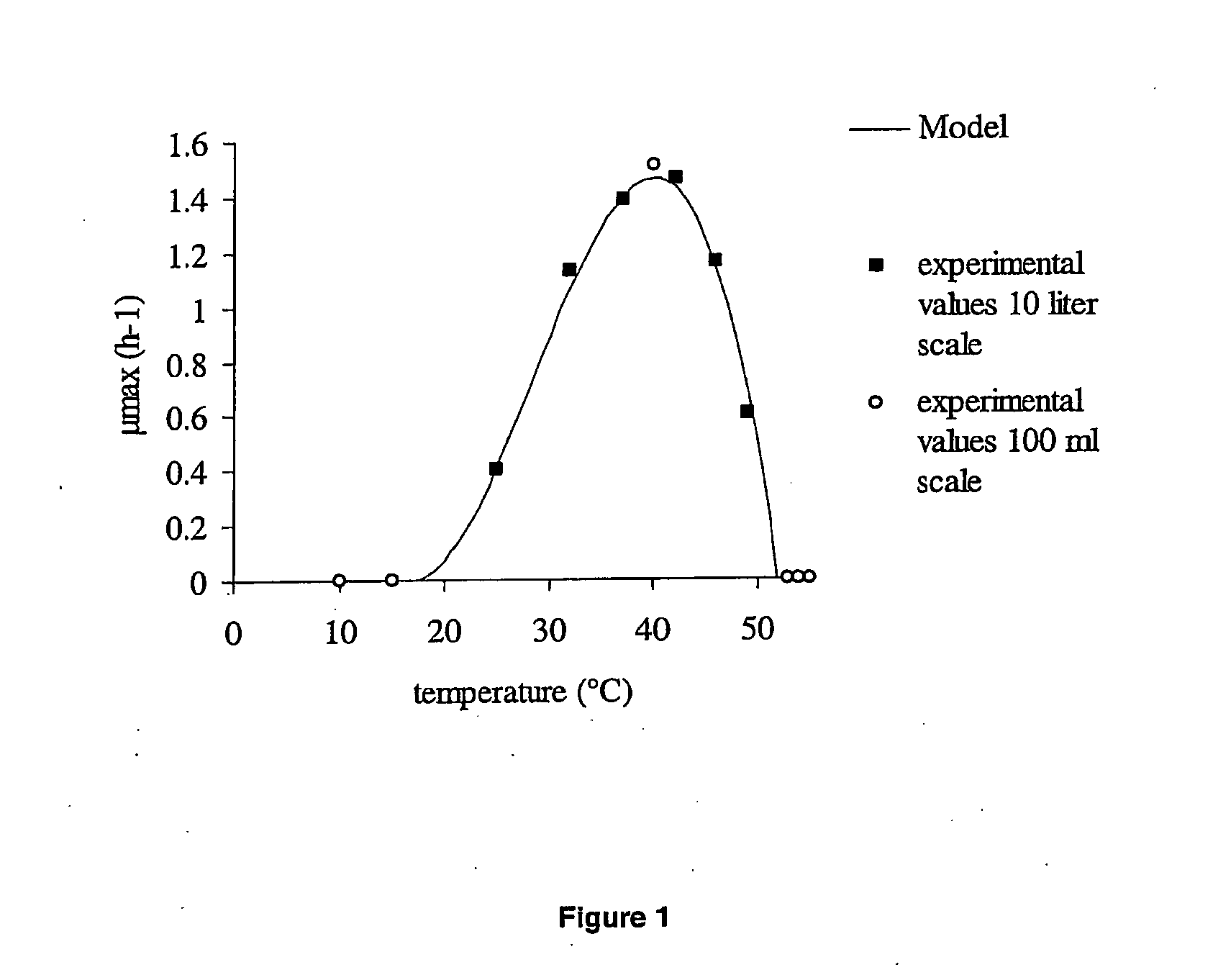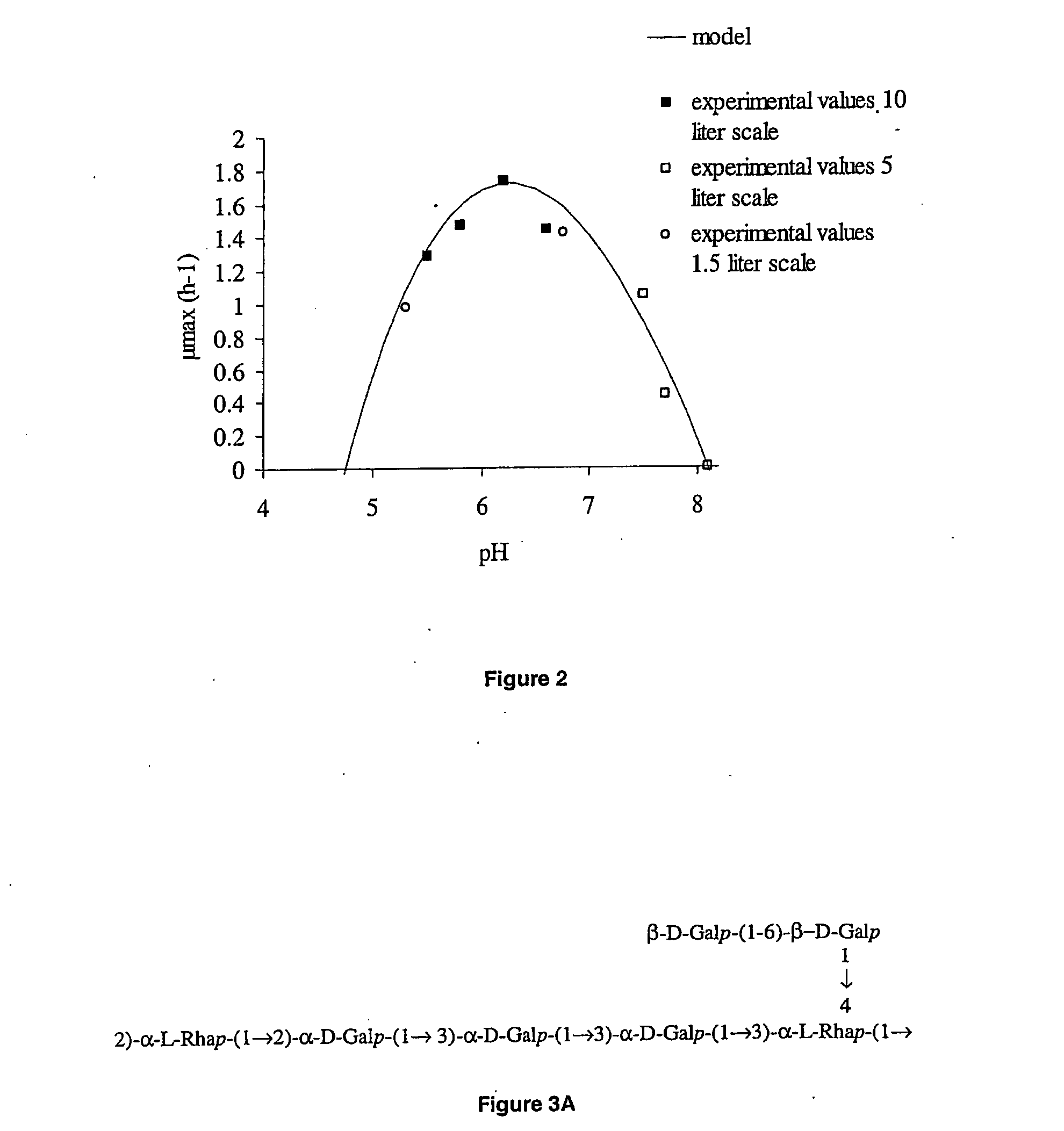Novel streptococcus thermophilus strains producing stable high-molecular-mass exopolysaccharides
a high-molecular mass, heteropolysaccharide technology, applied in the field of streptococcus thermophilus strains producing stable high-molecular mass heteropolysaccharides, can solve the problems of unstable production, low amount of eps produced by labs, and not all food additives are allowed in all countries, so as to achieve enhanced growth and eps production, and improve solubility. , the effect of good growth
- Summary
- Abstract
- Description
- Claims
- Application Information
AI Technical Summary
Benefits of technology
Problems solved by technology
Method used
Image
Examples
example 1
Materials and Methods
Strain and Strain Propagation.
[0114]Streptococcus thermophilus ST 111 was used as the EPS-producing strain. The strain was disposed on May 29, 2002 under the accession number LMG P-21524 at the Belgian Coordinated Collections of Microorganisms (BCCM / LMG culture collection).
[0115] The strain was stored at −80° C. in de Man-Rogosa-Sharpe (MRS) medium (Oxoid, Basingstoke, United Kingdom). To obtain exponentially growing cultures, S. thermophilus ST 111 was propagated twice at 42° C. for 12 h in the medium identical to the one used for the fermentations later on.
Media
[0116] In MRS medium (de Man et al., 1960), M17 medium (Terzaghi & Sandine, 1975), and HJL medium (Stingele et al., 1996), lactose, sucrose, glucose, galactose, fructose, and rhamnose were first tested as the sole energy source (2.0%, m / v) for growth of S. thermophilus ST 111 on 10-ml scale. Then, different media were tested in Erlenmeyer flasks on 50-ml scale as to their capacity to support grow...
example 2
Characterisation of EPS
Molecular Mass Determination of EPS
[0121] The EPS material isolated as described above was dissolved in MilliQ water (Millipore Corp., Bedford, Mass., USA), dialysed against distilled water at 4° C. for four days with water replacement twice a day, using Spectra / Por membranes (VWR International) with a MMCO of 3500 Da, and subsequently freeze-dried.
[0122] The molecular mass of the isolated EPS of all fermentations was determined by gel permeation chromatography. A Sephacryl S-400 gel (Amersham BioSciences AB, Uppsala, Sweden) was used. Samples containing about 50 mg.ml−1 of lyophilised EPS were applied. The EPS were eluted with 50 mM potassium phosphate / NaOH buffer (pH 6.8) containing 0.15 M NaCl. A dextran standard series (molecular masses between 8.0×104 and 1.8×106 Da) was used to estimate the EPS molecular mass. The polysaccharide content was determined by on line refractive index detection (Waters refractive index detector, Waters Corp., Milford, Mass...
example 3
Growth and Exopolysaccharide Production Kinetics of S. thermophilus ST 111
[0126]S. thermophilus ST 111 only grew in MRS, M17, and HJL media supplemented with glucose, lactose, and sucrose as the sole energy source. On 50-ml scale it was observed that EPS production was comparable in all three media when 2.0% of lactose was used, with an increase in EPS yield for higher lactose concentrations. In milk medium, both growth and EPS production were enhanced when an additional energy or nitrogen source were applied. Contaminating polysaccharide material from medium constituents was present in all complex media, except in milk (Table 1).
[0127]S. thermophilus ST 111 displayed a very low proteolytic activity, as indicated by its slow coagulation of milk at a suboptimal growth temperature of 30° C. Further, fermentation in milk alone with S. thermophilus ST 111 only slightly improved the viscosity of the medium. During fermentations performed in milk medium at 37° C. with pH control, S. the...
PUM
| Property | Measurement | Unit |
|---|---|---|
| molecular-mass | aaaaa | aaaaa |
| molecular mass | aaaaa | aaaaa |
| molecular-mass | aaaaa | aaaaa |
Abstract
Description
Claims
Application Information
 Login to View More
Login to View More - R&D
- Intellectual Property
- Life Sciences
- Materials
- Tech Scout
- Unparalleled Data Quality
- Higher Quality Content
- 60% Fewer Hallucinations
Browse by: Latest US Patents, China's latest patents, Technical Efficacy Thesaurus, Application Domain, Technology Topic, Popular Technical Reports.
© 2025 PatSnap. All rights reserved.Legal|Privacy policy|Modern Slavery Act Transparency Statement|Sitemap|About US| Contact US: help@patsnap.com



